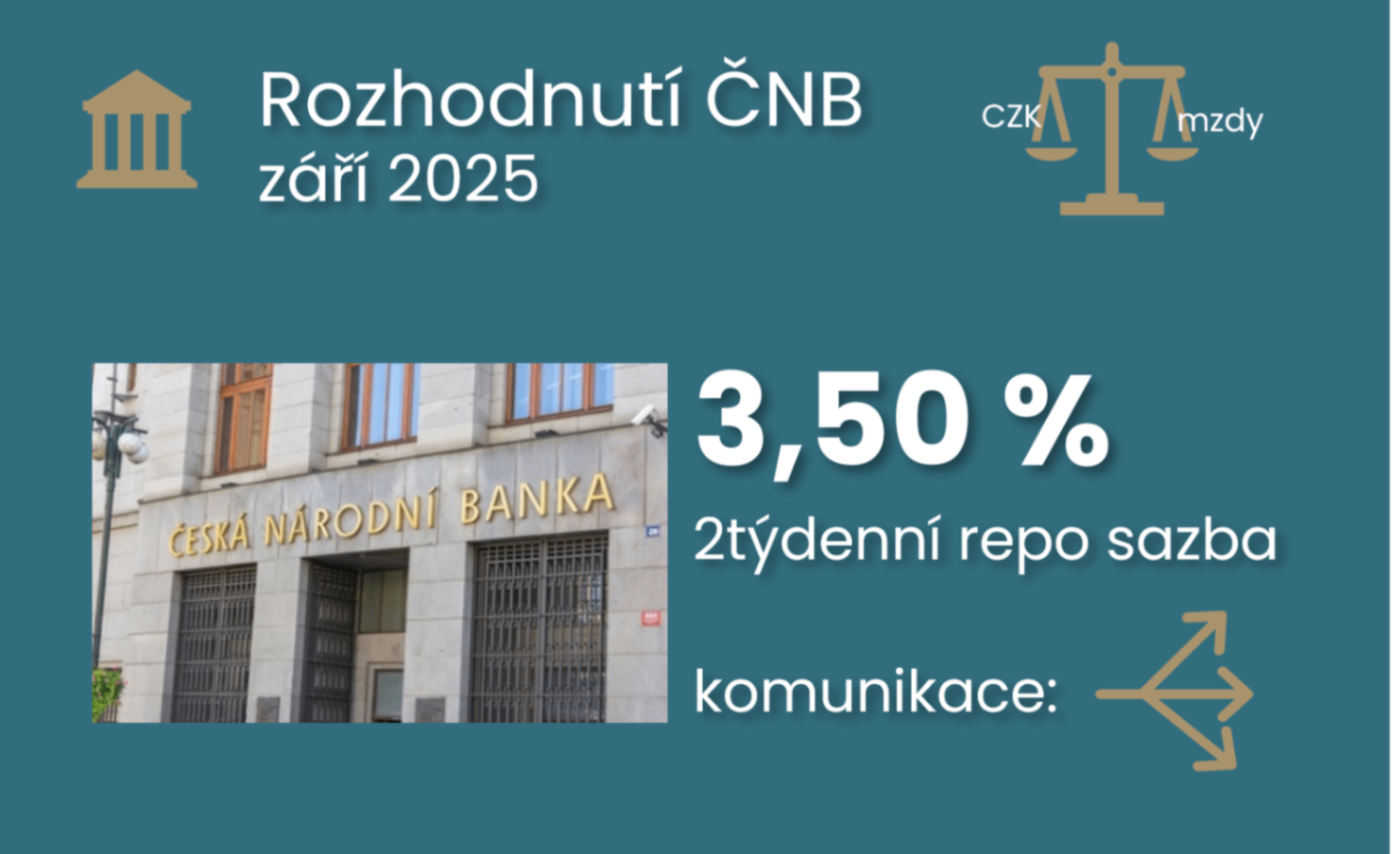The CNB surprised with a less hawkish tone in keeping the interest rate at 3.5%
Comment by Jaromír Šindel, Chief Economist at the CBA: While the CNB unsurprisingly left interest rates unchanged with the two-week repo rate at 3.5%, the Board's statement on the monetary policy settings, however, was more surprising in its less hawkish tone, leaving open all possibilities for future monetary policy settings.

Today's CNB communication thus partially resuscitates the CBA forecast, which expects one more CNB interest rate cut to 3.25% in Q1 2026, but the pre-election preferences and stronger wage growth reduce the likelihood of this move.
The hawkish tone in terms of the need to maintain a relatively tight monetary policy, i.e. with a positive real interest rate and an appreciating exchange rate, reflects upside risks to inflation. However, the urgency of the hawkish tone was weakened by the appreciation of the koruna, which is one of the downside risks to inflation. As a result, according to Governor Michel, the Board is keeping all options for the future path of the interest rate unchanged, which is consistent with the sentence in the statement with the word"currently", i.e. that "Continued inflationary pressures from the domestic economy do not currently allow for further rate cuts." Thus, the Board meeting minutes, available on October 3, should not provide further impetus. In my outlook for the September CNB decision, I had expected more hawkish communication, indicating rate stability and a possible future rate hike in an unspecified distant horizon.
Regarding upside risks to inflation - these remained unchanged from August as stronger wages were already among the risks. They also include inertia in service price growth, mortgage activity, additional government spending and the introduction of ETS2. Conversely, the downside risk to global economic activity has disappeared from the downside risks, which in a different version, together with the financial volatility associated with government borrowing in France, have moved to uncertainties. The situation in Ukraine has long been one of them. A summary of economic realities compared with the CNB's forecast is available in Figures 1 and 2 in my outlook here: September's CNB interest rate decision: the hawkish calm before the storm?
Thus, the second week of October will be crucial for the CNB ahead of the upcoming monetary policy meeting on 6 November. This, in addition to post-election clues, will offer a snapshot of September core inflation, including services (10 October), where September sentiment does not suggest intensifying price pressures, as well as August economic activity, including industrial payrolls (7 and 8 October) in the context of improved September sentiment after weaker July activity, and Q3 housing supply prices (6 October) with respect to imputed rents. But the CBN is unlikely to ignore October's confidence survey, whose quarterly survey will offer further insight into inflationary pressures from the economy via production capacity utilization and worker shortages following stronger wage growth without stronger productivity in Q2.